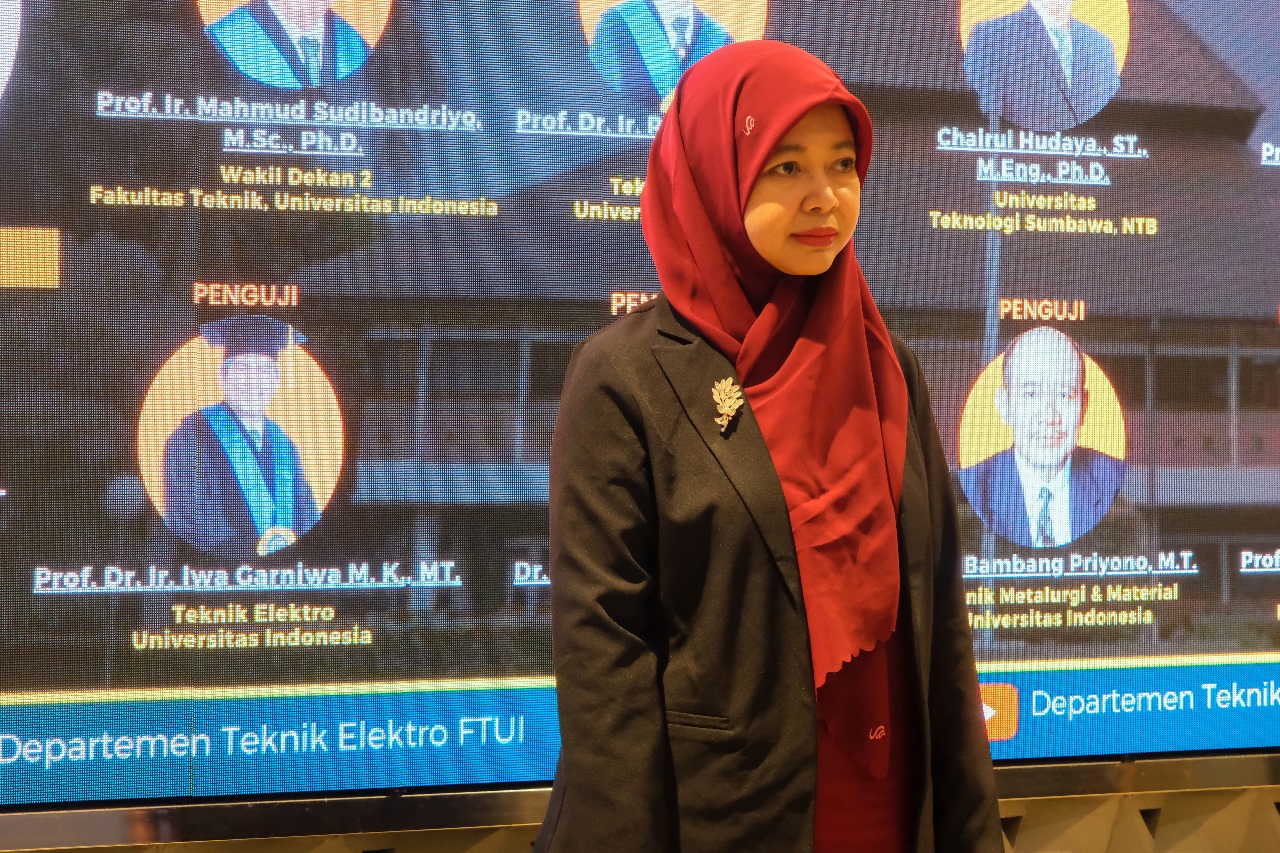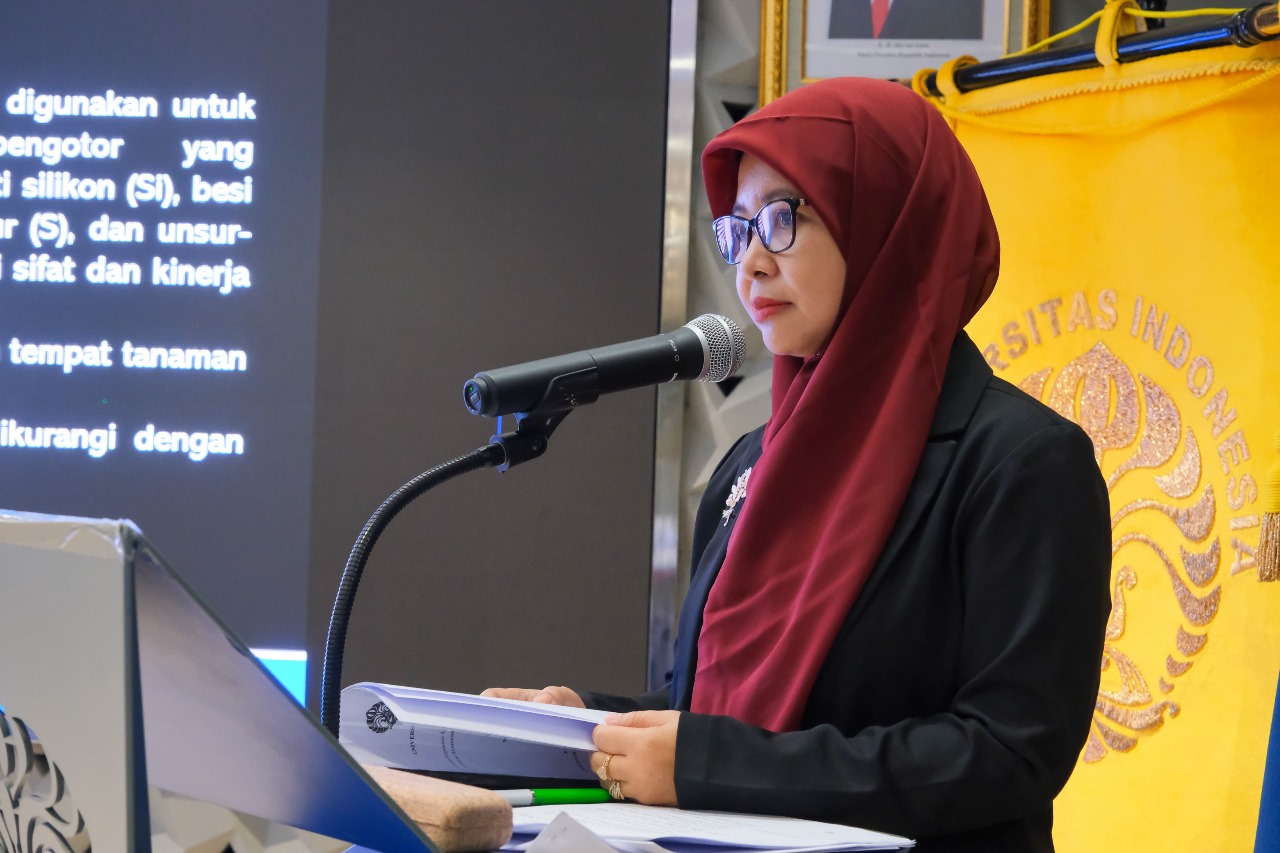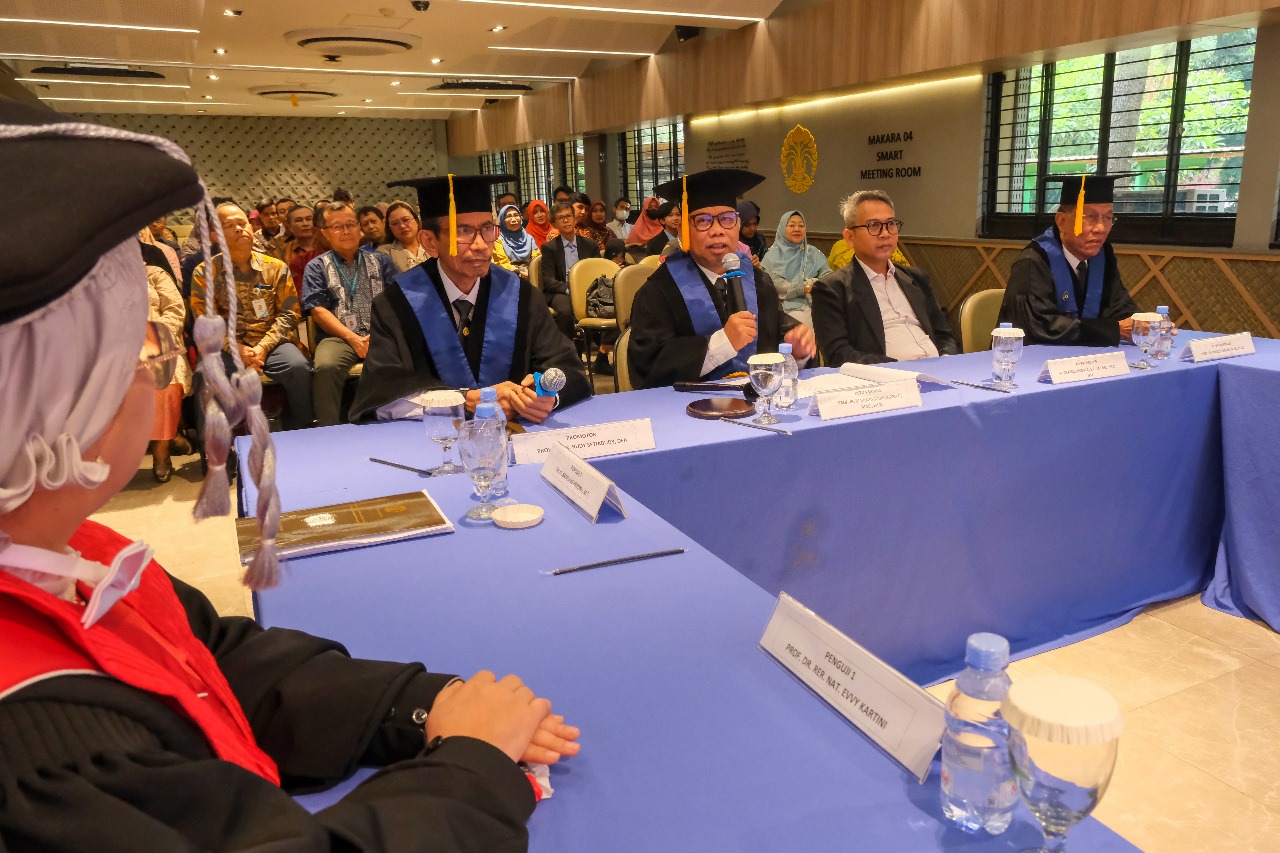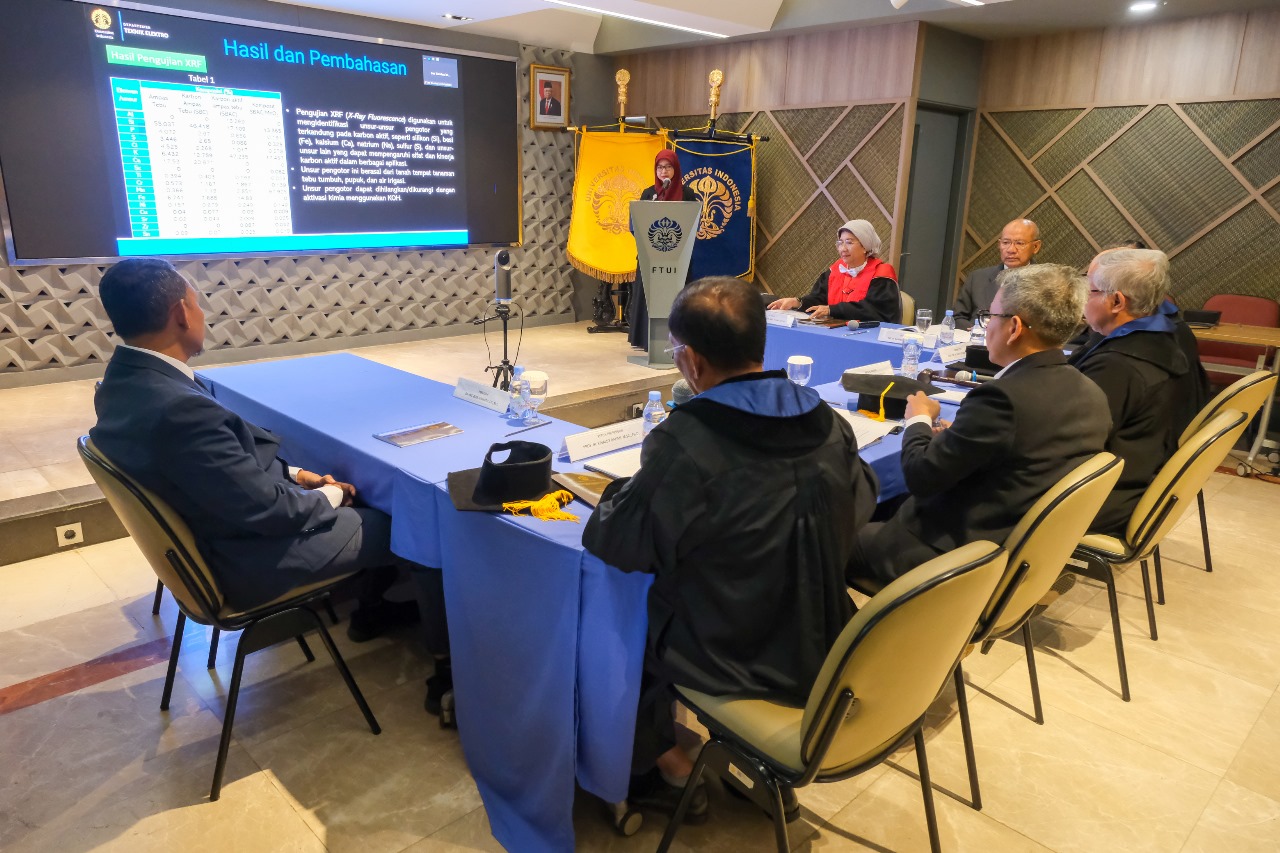Murie Dwiyantini, a doctoral student in the Electrical Engineering Department at FTUI, researched sugarcane bagasse, revealing its potential as an alternative material for energy storage. This research is documented in her dissertation titled “Development of Lithium-Ion Capacitors as Biomass Sugarcane Bagasse-Based Energy Storage Devices with MnO2 Composite,” presented at the open Doctoral Promotion Session of FTUI on Thursday (11/01/2024) at the Makara 04 Smart Meeting Room, FTUI Dean’s Building.
Global warming across various life sectors, especially in the energy sector, has significant impacts on greenhouse gas emissions, necessitating clean energy derived from renewable energy sources (RE). Although Indonesia has been promoting RE usage, the challenges of RE source development and its intermittent nature require high-cost energy storage devices (batteries).
Lithium-ion capacitors (LIC), a new type of battery combining lithium-ion batteries at the anode and supercapacitors at the cathode, offer a solution with high energy density and power. “However, LIC performance is heavily influenced by the cathode material made of activated carbon. Activated carbon is commonly made from expensive graphene, with a complex and hazardous manufacturing process. Therefore, an alternative material for eco-friendly and cost-effective activated carbon needs to be identified. One option is the abundant sugarcane bagasse biomass in Indonesia. Sugarcane bagasse has high carbon and lignocellulose content, making it a quality activated carbon material,” explained Murie during her presentation.
In this research, Murie conducted a synthesis analysis of sugarcane bagasse material into activated carbon using a simple pyrolysis method with an airtight reactor tube and a dry method, where a chemical activator is directly mixed into the carbon without a solution, making it more efficient in terms of time and cost. Subsequently, sugarcane bagasse activated carbon was used as the cathode material in LIC and assembled with LTO as the anode in CR2032 coin cell form. However, the electrochemical testing results of LIC with sugarcane bagasse carbon showed low power density and conductivity. To address this, metal oxide in the form of MnO2, with high capacitance, low cost, and eco-friendly characteristics, was added.
The research results indicate that sugarcane bagasse-based activated carbon can be used as the cathode material in LIC. The highest specific surface area is 1906 m2/g, specific capacitance is 61 F/g, energy density is 122 Wh/kg, power density is 1800 W/kg, conductivity is 2.15 μS/cm, and capacity is 33 mAh/g with 84% retention over 100 cycles. The addition of MnO2 to sugarcane bagasse activated carbon showed an improvement in LIC electrochemical performance, with a specific capacitance of 101 F/g, energy density of 452 Wh/kg, power density of 2700 W/kg, conductivity of 9.17 μS/cm, and capacity of 55 mAh/g with 93% retention over 100 cycles. This research concludes that sugarcane bagasse has the potential to become activated carbon used as the cathode material in LIC. The addition of MnO2 to sugarcane bagasse activated carbon shows better performance in LIC as an eco-friendly energy storage device.
FTUI Dean, Prof. Dr. Ir. Heri Hermansyah, S.T., M.Eng., IPU, stated, “This research is very interesting because it offers a new approach to utilizing activated carbon derived from agricultural waste to build LIC through a simple synthesis process. Additionally, these results make sugarcane bagasse-based activated carbon a promising candidate for future energy storage applications.”
This research dissertation on the use of sugarcane bagasse as an energy storage material has successfully earned Murie Dwiyantini a doctoral degree in Electrical Engineering with a very satisfactory predicate, GPA of 3.92. Murie is recorded as the 166th doctoral graduate from the Electrical Engineering Department and the 532nd doctoral graduate from the Faculty of Engineering, Universitas Indonesia. The Doctoral Promotion Session was led by Prof. Ir. Mahmud Sudibandriyo, M.Sc., Ph.D., with the supervisor Prof. Dr. Ir. Rudy Setiabudy, DEA, and co-supervisor Chairul Hudaya, Ph.D. The examination team consisted of Prof. Ir. Renaldy Dalimi, M.Sc.,Ph.D.; Prof. Dr. Iwa Garniwa, M.K.,M.T.; Prof Dr. Rer.nat Evvy Kartini; Dr Ir. Bambang Priyono, M.T.; and Dr. Ing Budi Sudiarto, S.T.,M.T.
***
Office of Public Communication
Faculty of Engineering, Universitas Indonesia






